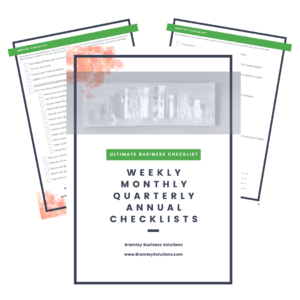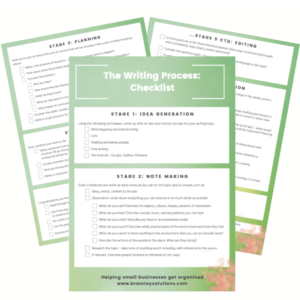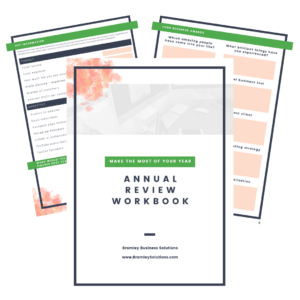The basics for small business owners
This article is aimed at small businesses who want to know how to improve SEO (search engine optimisation) on their website themselves. Doing it well takes time and energy – big companies have whole departments who do just this. If SEO is key to your strategy, I recommend hiring a company to do this for you. The contents of this article will help if you’ve currently got no SEO optimisation or would like an understanding of what SEO is.
What is SEO?
SEO is designing and adapting your website so that it ranks higher in search engine results for certain searched terms. For example, if you optimised a page of your website for the term “hypnobirthing”, your website could come up on the first page of Google’s results when someone searches for “hypnobirthing” in Google (hypnobirthing is a real thing, I discovered quite recently).
Search Engine Optimisation normally really means Google optimisation – certainly we optimise to Google’s rules, as Google makes up 90% of all internet searches.
Why should you care?
SEO improvements mean that you do not have to always push people to your website by marketing initiatives, but it will be self-sufficient – attracting traffic on a daily basis from users interested in a particular topic. Google will bring customers to you, now isn’t that nice?

What to do first
Before you can jump in improving your SEO, there are some things to set up first. Google Analytics is generally really handy for seeing visitors to your website, which pages they are looking at, for how long, etc. so you can see the impact of your SEO efforts. Google Search Console can show you where you appear in Google searches, and if Google has any issues searching your website this is where they will let you know.
- Sign up for Google Analytics here: https://marketingplatform.google.com/about/analytics/ (You’ll need information about your website to set it up)
- Sign up to Google Search Console here: https://search.google.com/search-console
- Adjust your Google Search Console settings to tell Google that you target UK, or wherever you target. The new version of the console doesn’t yet allow this, so you have to go into the old version. Click here to do so: https://www.google.com/webmasters/tools/i18n?utm_source=support.google.com/webmasters/
Measuring your SEO
To know if you have improved, you need to know where you are now. Go to your Google Search Console and click ‘Performance’ on the left-hand menu. You will then see a list of all search queries in which your website appears in Google results.
Some definitions to help you understand your performance:
- Impressions – the number of times your website appeared in a search result (may have been on page 6 and no one saw, but it was there)
- Clicks – this is the number of times your website was clicked upon from the impressions given
- CTR – Click Through Rate, proportion of impressions that become clicks.
- Position – how far down the Google results you appear. Divide by 10 to work out which page you’re on.
The two lines on the graph will start going up as your SEO comes into effect. That’s the plan anyway.
How to improve SEO
Choosing which terms to optimise for
If you want to know how to improve SEO, you need to know what you are improving it for: the keyword. When we say ‘keyword’, it can be a few words or phrase, like “Bramley Business Solutions”. Create a list of the keywords you might optimise for.
Ahrefs is amazing at this information – letting you know what your competitors are optimising for that works, how hard each term would be to appear in the top 10, suggestions for similar terms people search for – but you have to pay for it. So, for the level this article is aiming at, I’d suggest just some logic for now.
- Subject area – what topics and keywords would the audience you’re trying to attract search for? You could ask some clients.
- Popularity – at our level, there’s no point optimising for a really popular term that the big companies have their teams of people optimising for, e.g. “boots”. Choose something a bit more niche, e.g. “purple cowboy boots”.
- Which terms are you already ranking for? (see Google Search Console) Build on what you have.
- Which search terms bring up your competitors?
- Visitor intent – someone searching ‘Buffy the vampire slayer board game’ is probably looking to buy, someone searching ‘what is the capital of Poland’ wants information. Searches intending to buy are more appropriate if your marketing strategy is to get people to buy from your website. Searches looking for information are good if you’re showing yourself as an expert in the field to build credibility before a bigger purchase or service. Often a mixture is a good idea; it depends on your business.

Getting keywords on your webpage
Choose one keyword to optimise for on each webpage, then edit the content to meet the following criteria as much as possible:
- Page title tag starts with the keyword
- URL includes the keyword
- Keyword in the H1 heading (main heading)
- Ensure the term is mentioned in the copy (naturally – Google knows if it sounds false. Scary stuff)
- Put the keyword in the ALT tags of the pictures on the page
- At least 200 words per page
- Make the URL and meta description attractive – solve a problem for the client, make them want to click on the Google result. Say what they’ll see on the website – click bait and lots of bounces (people leaving again immediately) are not good for your SEO.
Homepage improvements
Your home page needs to answer these questions from potential clients: what do you do? why should I care? why should I trust you? what do I do next?
- Ensure it is clear on the first screen on landing on your website what it is you do/sell. This is not the time to be enigmatic or mysterious
- Show your USP
- Credibility – include logos of clients, testimonials
- Make it clear what to do next. To achieve this, think about your customers. When they first hear about you, what do they ask? What do they need to know next to feel more comfortable buying? Add a link through to the page that answers their query or objection. And then again from that page. Lead them through your website answering questions until they have nothing left to do but your key ‘call to action’ – be that buy, book an appointment or contact you.
Blogs
A blog is a great way of updating your website regularly (Google likes this), getting keywords into your website and getting people to link into your website. If you write really useful, amazing content, others will send their people to you (to show their potential customers how well informed they are). People linking in (inbound links) is the true key to SEO. Don’t make your articles promotional, ensure they are helpful, informative, or solve a problem. Send it to people, put it on social media, make it easy for others to share it.

Had enough fun yet?
It can take months for your Google ranking to reflect the changes in your website, so have patience and keep going.
I am not an SEO expert. I haven’t even got around to doing much of this for my website yet – though the little I have done has resulted in increased average impressions from 2 per day to 150 per day. This stuff works.
The above is a result of a training course with Danny Richman and frustration at all information online on how to improve SEO being written by experts who give complex and bewildering answers. SEO can be quite confusing to small business owners, so I hope this article clarifies the area a little and gets you started.
If you’d like further information on how to improve SEO, please see the following:
- For SEO training, I recommend the extremely knowledgeable Danny Richman: www.seotraininglondon.org/
- If you’d like another company to improve your SEO for you, Open Door Digital can help you: www.opendoor.digital
- A more technical explanation can be found here: https://moz.com/beginners-guide-to-seo
- Google’s own SEO Starter Guide: https://support.google.com/webmasters/answer/7451184?hl=en
- Tools you can use for improving your SEO: https://www.seotraininglondon.org/seo-tools-websites
Good luck and let me know how you get on!
A couple of other Bramley articles you might like:
We send out one email each week with handy tips and information for small business owners, including when a new article is published. If you’d like to receive these, sign up below. You can unsubscribe at any time and I’ll never give your details to anyone else.
One happy recipient said: “Your content is awesome. Keep the wisdom coming. 🙌🏻”





